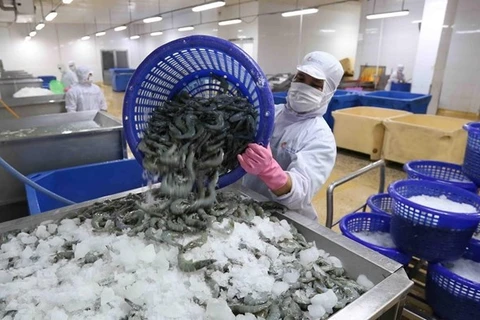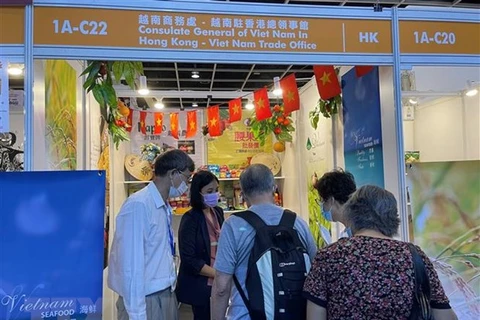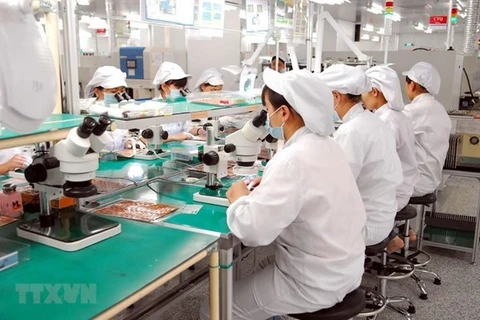 Container trucks queue up to get through customs clearance at Lang Son's Huu Nghi Border Gate. (Photo: nongnghiep.vn)
Container trucks queue up to get through customs clearance at Lang Son's Huu Nghi Border Gate. (Photo: nongnghiep.vn) The meeting was held among the Ministry of Agriculture and Rural Development, leaders of four northern provinces of Lang Son, Quang Ninh, Lao Cai and Cao Bang which border China, and the Embassy of China in Vietnam on August 11.
Tien requested his ministry’s units to regularly get updates from the Chinese side as the neighbouring country plans to apply a number of new policies for agro-forestry-fishery products originated from Vietnam.
He urged domestic agri-businesses and cooperatives to boost exports of goods to China via official channels and strictly comply with requirements from Chinese importers.
The official called for collective efforts from ministries, agencies, and local administrations of Vietnam and the Chinese Embassy to bring down barriers to bilateral trade, saying “we must thoroughly prepare from granting cultivation area codes, sanitary and phytosanitary measures (SPS), farming process, to packaging and transport.”
“To do so, we have no choice but to keep in touch with each other,” he noted.
Vietnam now has nine products exported to China via official channels, including dragon fruit, watermelon, lychee, longan, banana, mango, jackfruit, rambutan and mangosteen. The Ministry of Agriculture and Rural Development (MARD) is seeking authorisation for eight more agricultural products to be shipped to China via official channels. The ministry expects the current COVID-19 outbreak is soon stamped out so the two sides can ink a protocol on this matter.
Given that road and waterway transport restrictions have been put in place to prevent the spread of the virus, To Ngoc Son, Deputy Director General of the Ministry of Industry and Trade (MoIT)’s Asia-Africa Market Department, suggested Vietnamese exporters shift to railway transport.
A train can carry dozens of containers, meaning the same number of vehicles on road can be reduced, he said.
The MoIT is developing a quarantine protocol for rail transport based on those for road and waterway, Son said, adding that if problems of track gauge incompatibility and refrigerated containers are solved, this will be a game changer for trade between Vietnam and China.
Vice Chairman of the Lang Son People’s Committee Luong Trong Quynh voiced concerns over slow customs clearance at border gates, causing long queues of loaded container trucks. Some container trucks had even been in line near the border gates for up to a week, severely affecting quality of agriculture products, he said.
Agreeing with Quynh, Vice Chairman of the Quang Ninh People’s Committee Bui Van Khang added that China tightening rules on cross-border trade has also led to delays in customs clearance for Vietnamese farm produce shipments.
Khang proposed the MARD adopt policies facilitating exports under contracts to reduce dependence on cross-border trade. He also unveiled that Quang Ninh is considering opening more warehouses and container yards and building an agricultural trade centre enabling long storage of fresh food.
The province also plans to upgrade its border gates and build more ports and expressways, he said.
Data from the MARD shows that Vietnam’s import and export value of agricultural, forestry and fisheries products reached 53.2 billion USD in the first seven months of 2021, of which exports stood at 28.6 billion USD, up 26.7 percent from the same period last year.
The country’s trade of the products with China rose by 38.8 percent year on year to 8.67 billion USD in the first half of the year, with exports hitting over 6.17 billion USD, up 35.8 percent.
The strongest growth was seen in shipment of cattle feed (124.3 percent), followed by cashew nut (85.3 percent), and rubber (82.4 percent)./.
VNA























